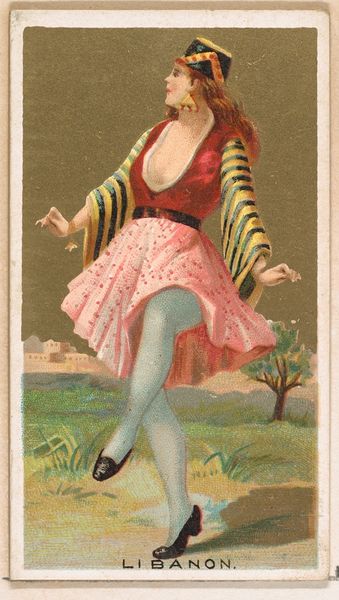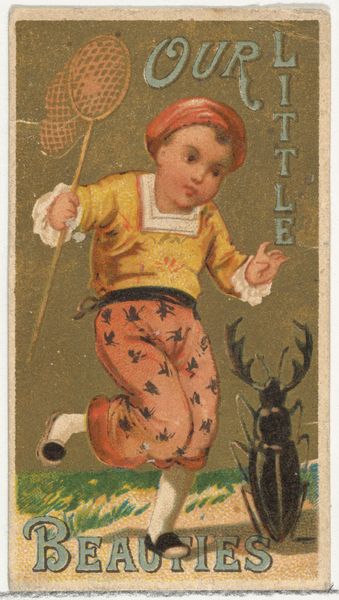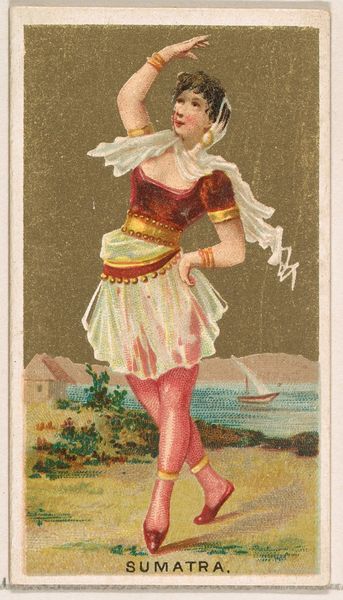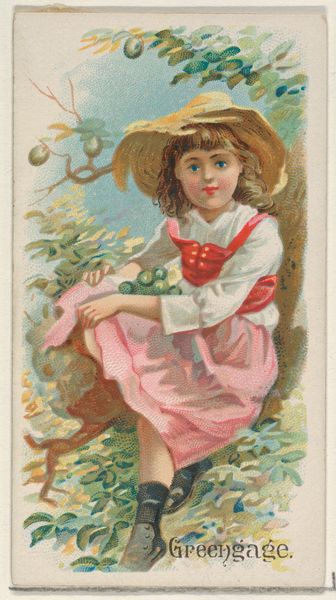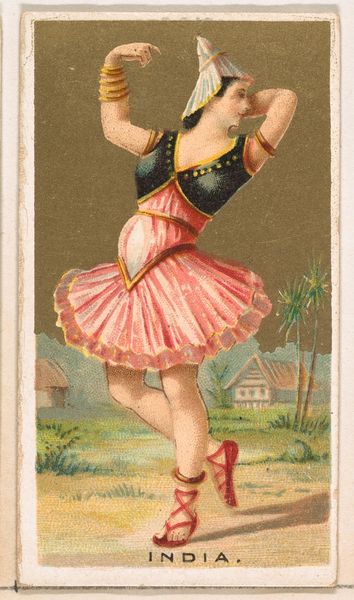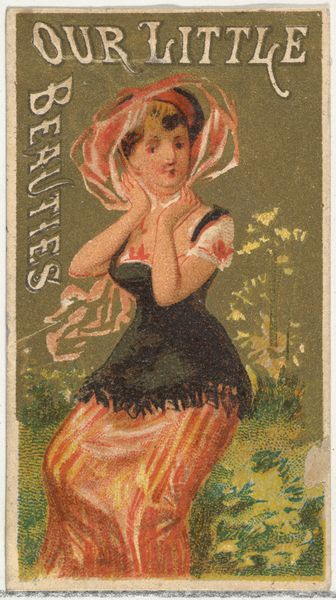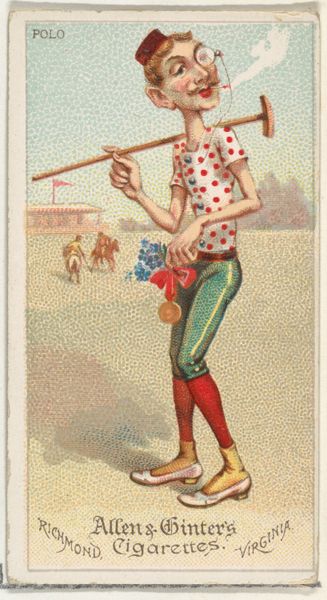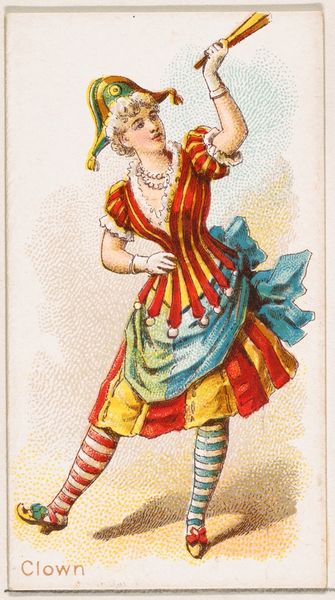
From the Girls and Children series (N58) promoting Our Little Beauties Cigarettes for Allen & Ginter brand tobacco products 1887
0:00
0:00
drawing, print
#
portrait
#
drawing
#
girl
# print
#
impressionism
#
figuration
#
watercolour illustration
#
genre-painting
#
portrait art
Dimensions: Sheet: 2 5/8 × 1 1/2 in. (6.7 × 3.8 cm)
Copyright: Public Domain
Editor: This is "From the Girls and Children series (N58) promoting Our Little Beauties Cigarettes for Allen & Ginter brand tobacco products," from 1887. The watercolour illustration depicts a young girl dressed as a bee. The illustration is both charming and disturbing given that it was used to sell cigarettes. How would you interpret the purpose and message behind this artwork? Curator: I’m fascinated by the means of production and distribution in this piece. Allen & Ginter weren't just selling tobacco; they were embedding their product within a social and cultural framework. These cards, inserted into cigarette packs, were essentially trading cards that normalized smoking. Editor: Right, the casual consumption of this imagery is insidious, shaping perceptions and behaviors through the materiality of these cards. Curator: Exactly! The "Our Little Beauties" title takes on a darker tone when contextualized with child labor prevalent during that time and this card’s promotion of an addictive product. Consider the implications of this image appearing within working-class households—a commodity circulating within the system of labor itself. Editor: It’s a strange duality – celebrating childhood beauty while simultaneously linking it to something harmful and adult. I guess it highlights the commodification of innocence? Curator: Precisely! This isn’t just about artistic merit; it's about understanding the manufacturing of consent and how consumerism operated within the class structures of the late 19th century. Editor: Viewing it as a cultural commodity changes everything. I initially saw it as an Impressionist portrait but now it's clearly intertwined with socio-economic history. Curator: See, by looking at these prints as mass-produced items of a historical consumer market we get an insight into the labor and commercial practice that often goes unnoticed within more traditional analysis. Editor: This really gives me something new to think about; considering the historical implications alongside material factors will deepen my approach to studying art.
Comments
No comments
Be the first to comment and join the conversation on the ultimate creative platform.
